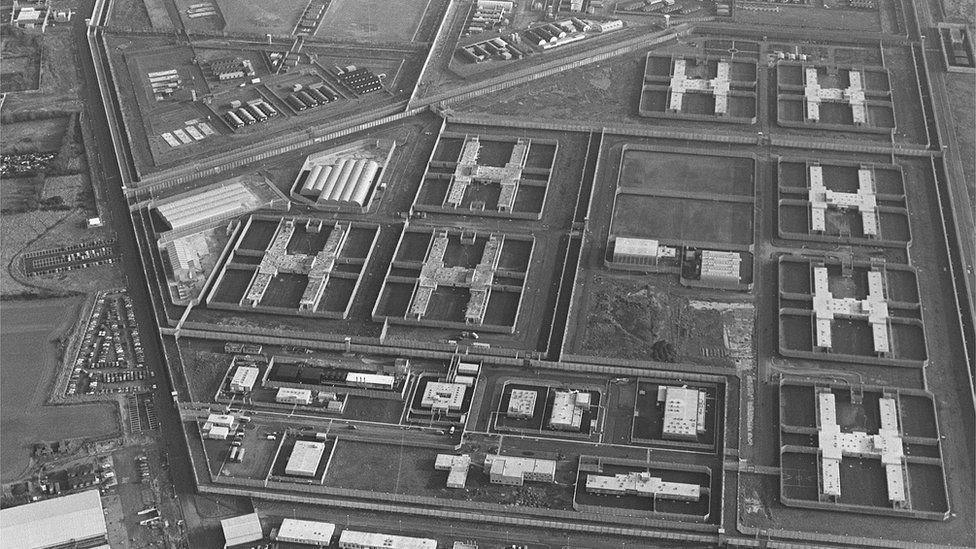The Troubles: When Belfast children fled the city
- Published
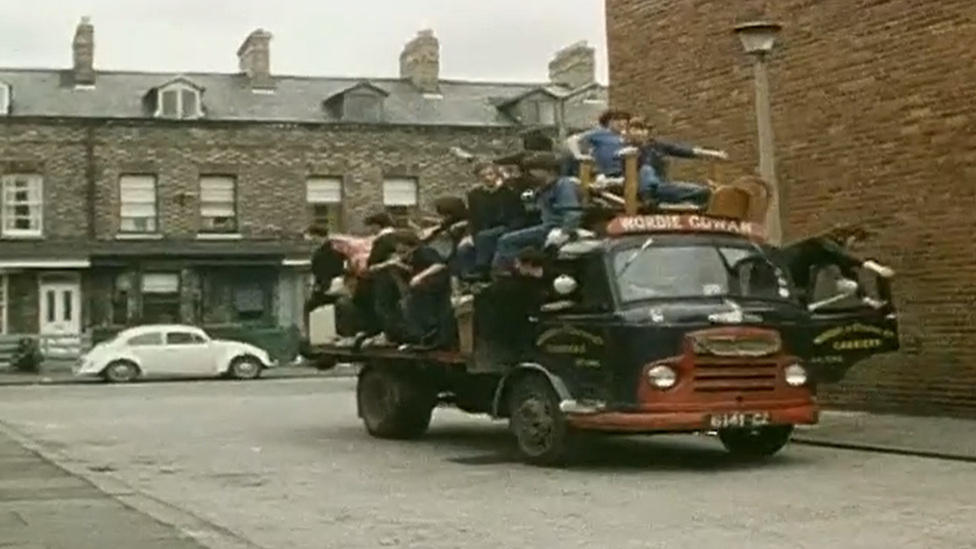
Chaotic scenes like this in August 1971 meant that areas of Belfast became more polarised
In the early years of the Troubles, as sectarian violence flared across Northern Ireland, thousands of people fled their homes.
Some were burnt out, others had windows broken or faced intimidation, some feared for their lives but many others just needed a break from the constant stress of violence in their neighbourhood.
The vast majority of people returned to their homes, many within a few weeks, but others never came back.
Dr Niall Gilmartin of Ulster University has studied the evacuation that took place at the time and is currently researching a book with Dr Brendan Browne that will examine the subject in depth.
Refugee crisis
The outbreak of sectarian violence in Northern Ireland during the late summer of 1969 "gave rise to a refugee crisis which at the time, represented the largest involuntary movement of population in Europe since the end of World War Two," Dr Gilmartin says.
And he believes it is important to distinguish between people who left their homes for a brief period and people whose move was permanent.
Of those who did not return to their homes but moved to other parts of the city, Dr Gilmartin says: "While all have gone on to rebuild lives after their displacement, for most, their harrowing experiences remain unrecognised and unresolved."
Paddy Davidson was nine when he was first evacuated from Ballymurphy in west Belfast to Gormanston military camp in County Meath in the Republic of Ireland.
He says "there was an atmosphere of fear and danger" in the locality.
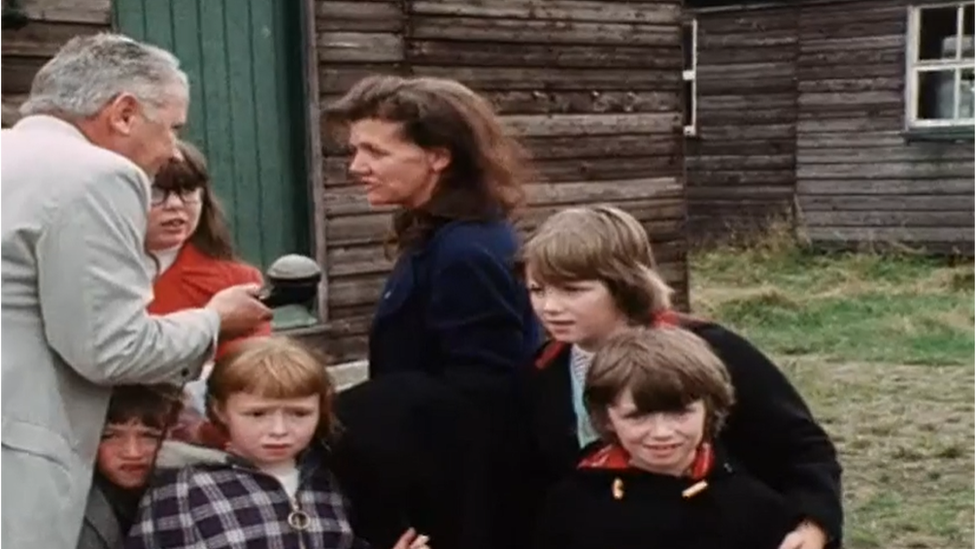
A mother from west Belfast is interviewed at Gormanston Camp in County Meath
This was August 1971, when internment without trial was introduced and 10 people were shot dead in Ballymurphy.
In May this year, an inquest found that all 10 victims were "entirely innocent" and that nine of them were killed by the Army.
Paddy explains how it was decided that local women and children would be evacuated across the border.
They travelled south in minibuses.
He remembers children sleeping three or four to a bed in Gormanston, saying: "It was basically a transit camp."
The evacuees were later transferred to other venues such as vacant schools, convents, monasteries, or host families.
"This was a bit of an adventure for us kids," says Paddy, adding that it was a stressful time for their mothers who were separated from their husbands.
'Cockpit of the Troubles'
Paddy became an evacuee for a second time in 1972.
"Ballymurphy, along with the Bogside [in Londonderry], became the cockpit of the Troubles," he says.
BBC journalists reported on the evacuations of 1971 on both sides of the community.
The roots of Northern Ireland’s Troubles lie deep in Irish history
Nationwide reporter Philip Tibenham travelled to Scotland by ferry with a group of mothers and children from the Crumlin Road area of north Belfast.
One Protestant mother he spoke to says her child has been on the barbiturate drug phenobarbitone for months to help her sleep.
"These children are in a war of nerves just like us mothers," says another.
"Literally only a few paces away from where these children live are Roman Catholic kids who are going though the same nightmare," the BBC journalist concludes.
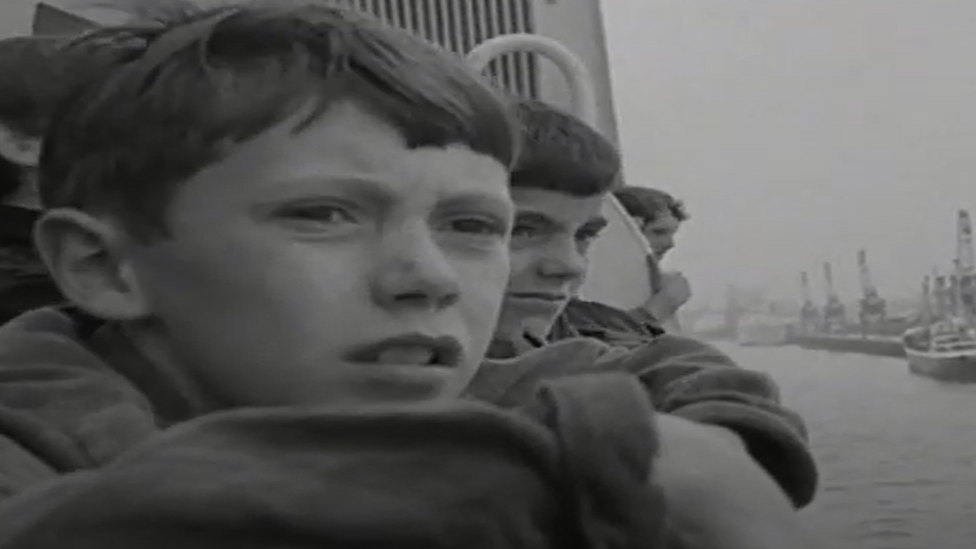
Boys from the Crumlin Road area of Belfast on the ferry to Scotland
Another report, from the BBC Nine O'Clock News shows evacuees from west Belfast arriving at Gormanston.
"It's just fear that we left, because I thought it would be safer for the children," one woman says.
"My mother and father's in Ballymurphy and our priest has just been shot dead," she adds, a reference to the killing of Fr Hugh Mullan on 9 August 1971, the day before the interview was televised.
A report from BBC Northern Ireland's Scene Around Six broadcast the following day shows Protestants leaving their homes with furniture piled high on the back of a truck.
It is a chaotic scene with armed soldiers and police on the street and the reporter, David Capper, interviews a woman who is abandoning her home
"The trouble up there is utterly ridiculous," she says.
A young man shouts that the crowd are going to wreck the woman's house to prevent any Catholics moving in.
Ivan Thompson was 11 in 1971 and lived in the Protestant Springmartin estate, close to Ballymurphy in what would now be referred to as an interface area.
"In '71 it got really bad - shootings and stonings and windows put in," he says.
"In the first week and the second week it got really hot and heavy."
He remembers neighbours sleeping under the stairs to escape the gunfire.
Ivan was a pupil at nearby Blackmountain Primary School, which the children shared with troops who were billeted there.
There was even a helicopter landing pad in the playground, he remembers.

By 1973 when this photo was taken, slum clearance and the Troubles left parts of Belfast a wasteland
As the situation deteriorated women and children were gathered in the school and taken to the Liverpool ferry.
"This was all arranged by what I now know is the Orange Order in Liverpool," Ivan says.
The women and children were billeted with families on Merseyside and Ivan remembers being taken on trips to the seaside and to an Everton football match.
As far as the kids were concerned "it was more like a holiday", he says.
The Springmartin families stayed in Liverpool for about four weeks to allow the trouble back home to die down.
It may seem hard to believe that 50 years ago thousands of people in the city felt the need to leave home for their own safety and those of their children.
1972 is generally viewed as the worst year of the Troubles due to the high number of fatalities, but August 1971 is one of the points in the Troubles when society appeared to come close to breakdown.
Related topics
- Published12 August 2019
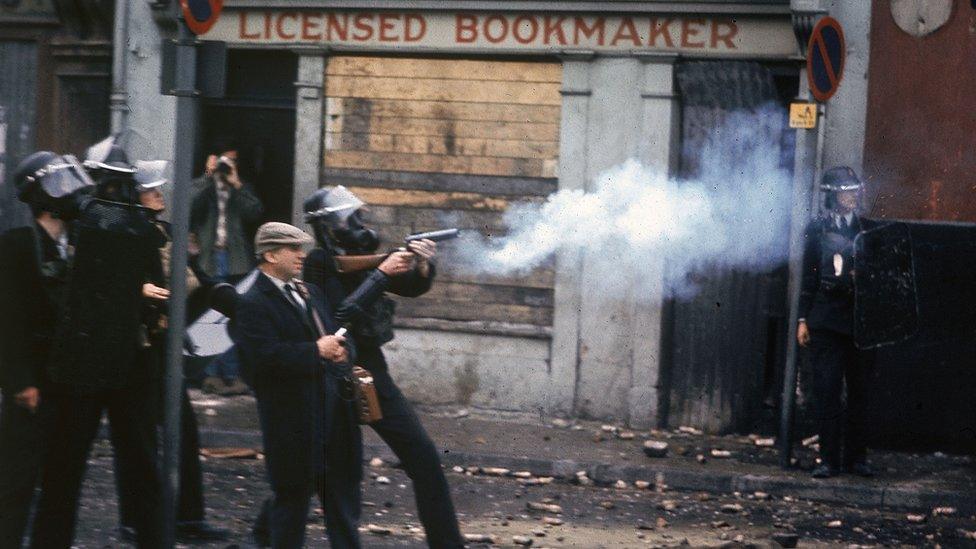
- Published9 August 2021
